Back in mid-November last year, five of us took the train up to Penrith, with the good intention of following a 320km circular route that would take us south into the northeastern edges of the Lake District, north over the Pennines, and up to the forests and wilds of Kielder. The idea was to test the new Ortlieb Back-Roller Pro (Plus) panniers, shoot our initial range of cycle touring clothing and outerwear, and enjoy some time on the road…
In hindsight, we should have foreseen the potential for such biblical weather at that time of year but we were set on an authentic unsupported cycle tour to take photos and test products. Needless to say, we didn’t quite stick to the plan over the four days but in and amongst the horizontal rain and gale-force winds that sent us sideways, we managed to get everything done and rode some fantastic miles in the process; even if some of them were in a converted school minibus. That’s the outdoors. That’s the nature of travelling by bike. Sometimes…
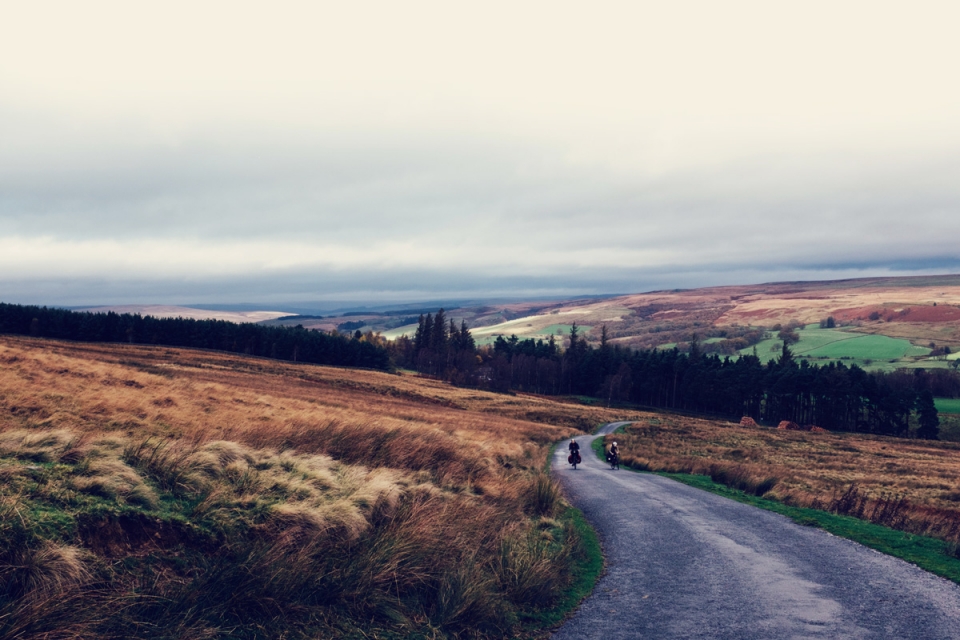
Riding the fantastic single-track roads from Greystokes through Mungrisdale to Brotherswater through horrendous weather, we realised that our optimistic plans to ride the full route were a write-off. There was no way we’d make it to Kielder at this rate…
Knowing we wanted to head up to Northumberland, once we were back in Penrith after skirting the shores of Ullswater, we decided it was best to get lifts up to Kielder and head for one of the modern Tarset Tor bothies – 7 miles from the shores of Kielder Water – to base ourselves for the weekend. Finally out of the gale-force winds and driving rain, we fired up the stove and sat it out over food and single malt – putting off looking at the forecasts and hoping the weather might improve to get some good riding in, and at least experience what Kielder was famous for: big starry skies that are a consequence of the lowest levels of light pollution in England.
The weather didn’t improve until the last morning when we had to set off to ride back to Penrith for the train home. Alongside a couple of shorter rides and photo sessions over the weekend, this ride south on the last day turned out to be a real cracker. Testing, but awesome:
Kielder to Alston | Big Landscapes, Forest Tracks & Crosswinds
After a big porridge breakfast and a few Aeropress coffees at the bothy, we set off into the strong winds on the Monday morning; the rain had stopped and for the first time in 2-3 days it was dry. Straight away, we were riding along stunning single-track roads through big landscapes, and heading off the beaten track through Kielder’s rugged forests – following National Route 68 – before crossing Hadrian’s Wall and continuing south-west to Penrith.
60 miles – easy.
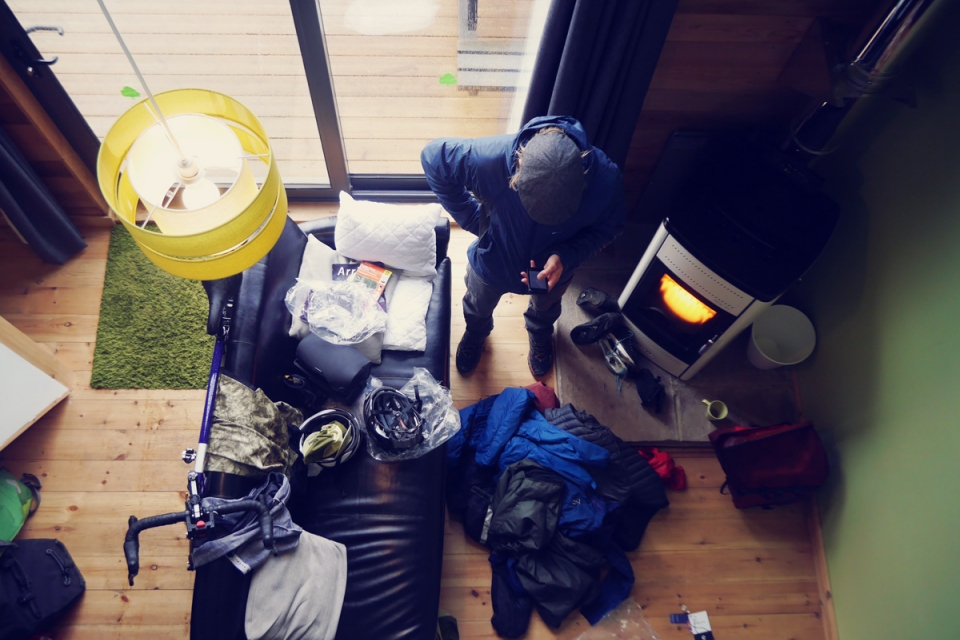
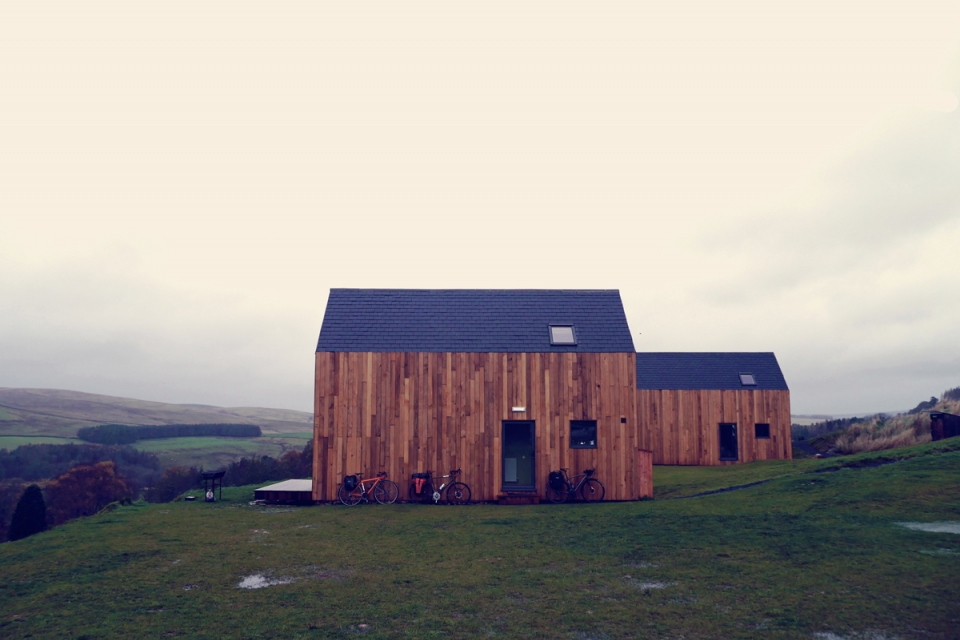
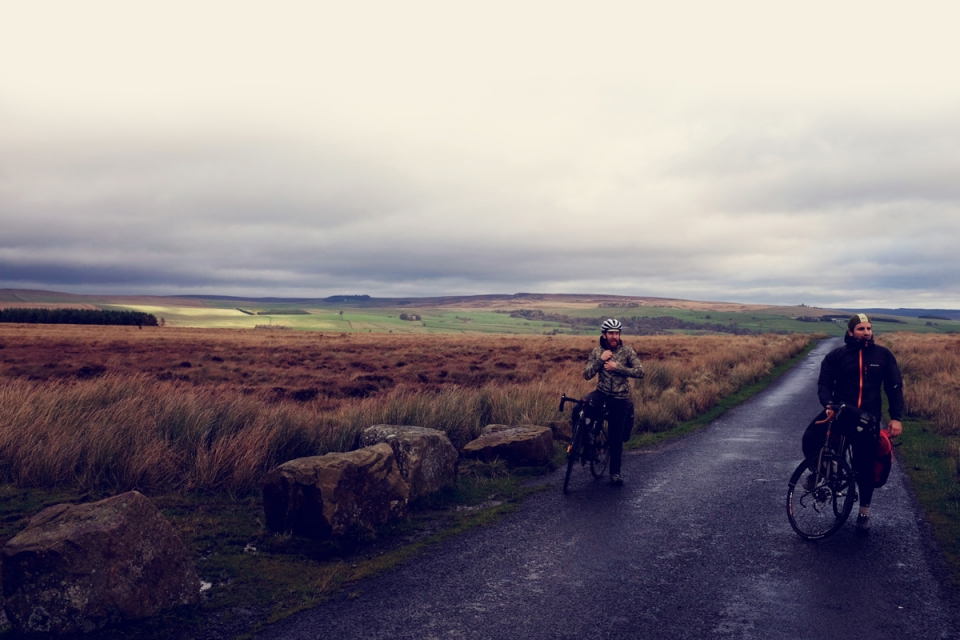
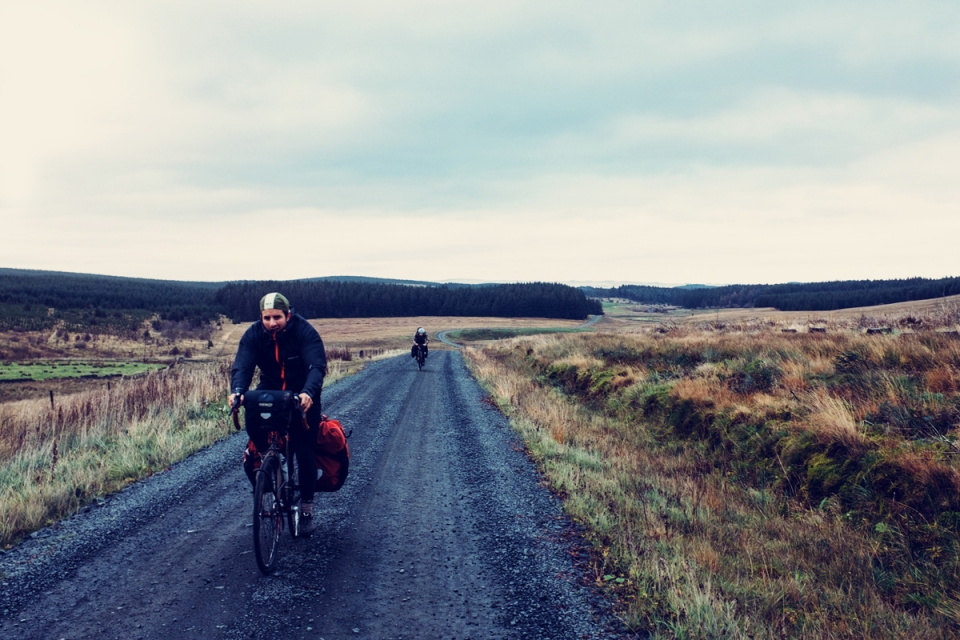
OS MAP TIPS
- Given our route headed slightly off-the-beaten-track through Kielder’s forests, we have included a snapshot from our OS Landranger (1:50,000) map to reflect the road types and surfaces for those cycle touring on 23mm skinny road tyres. We seek out the yellow roads with solid black outer lines when plotting a touring route – the well surfaced single track roads, typically 4m wide or less.
- The next road type down is noted on an OS map as yellow with dashed outer lines (see the 281m altitude marker, just north-east of Grindon Green on the map), which usually means the road turns to more of a gravel, rugged road – as in the photo above…
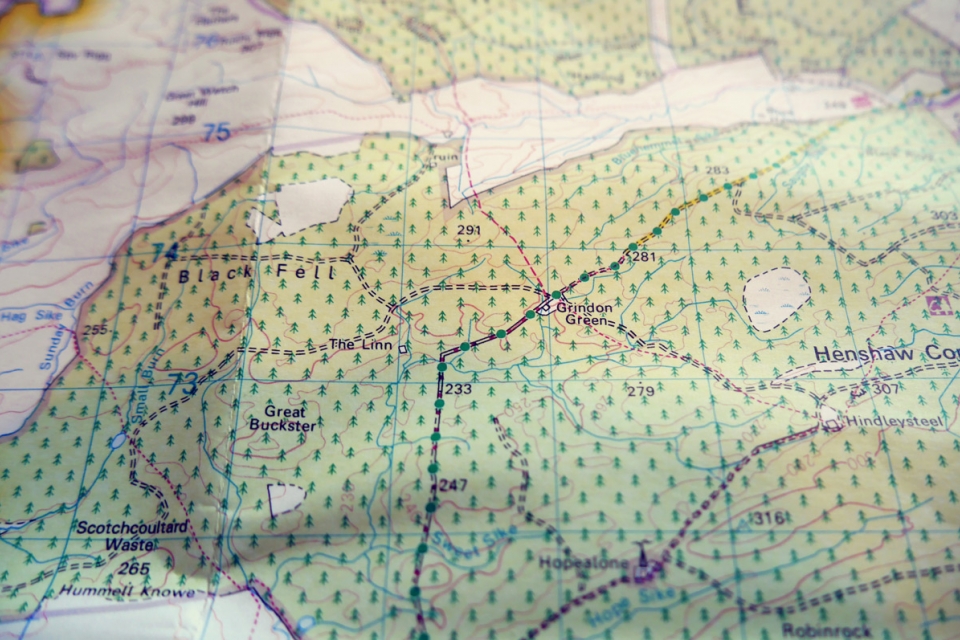
- …lastly, the lowest type of touring roads are the drives / tracks – as in the photos below. These are marked as solid or dashed lines with no fill (south from Grindon Green on the map) and are usually unknowns, so expect the worst surfaces when plotting a route with sections of dashed tracks; even if they are National Cycle Routes…
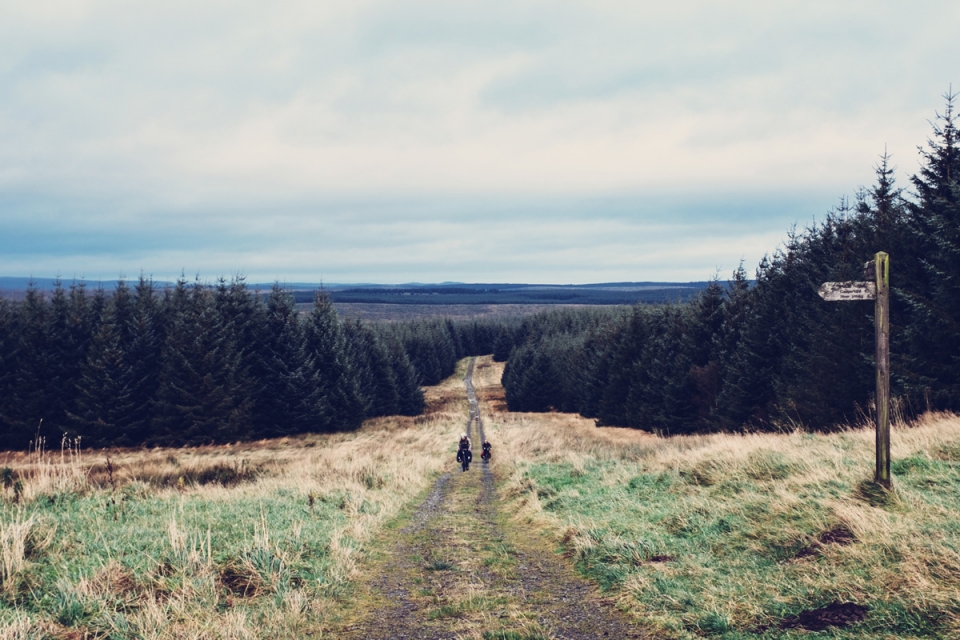
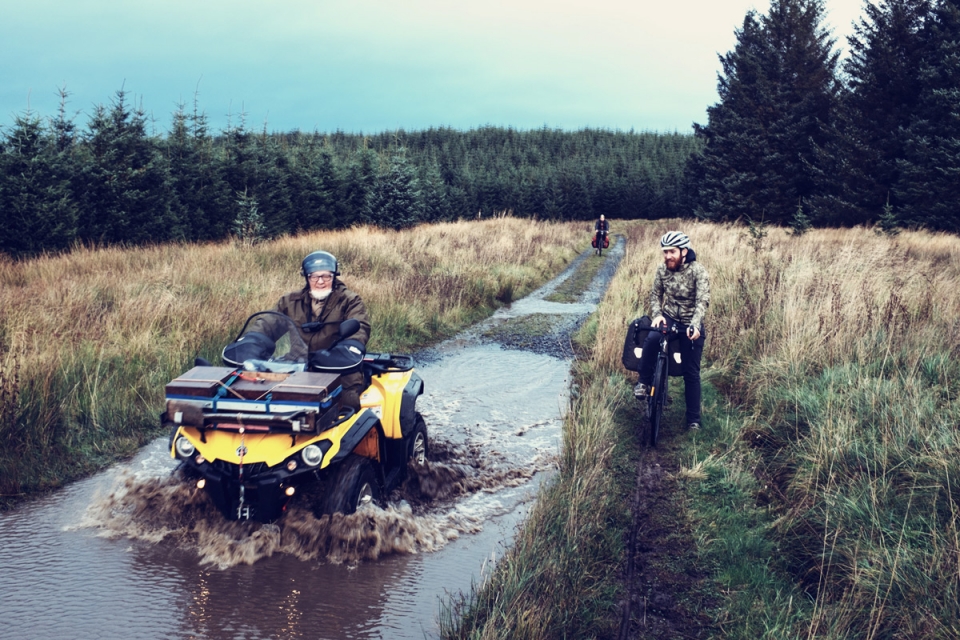
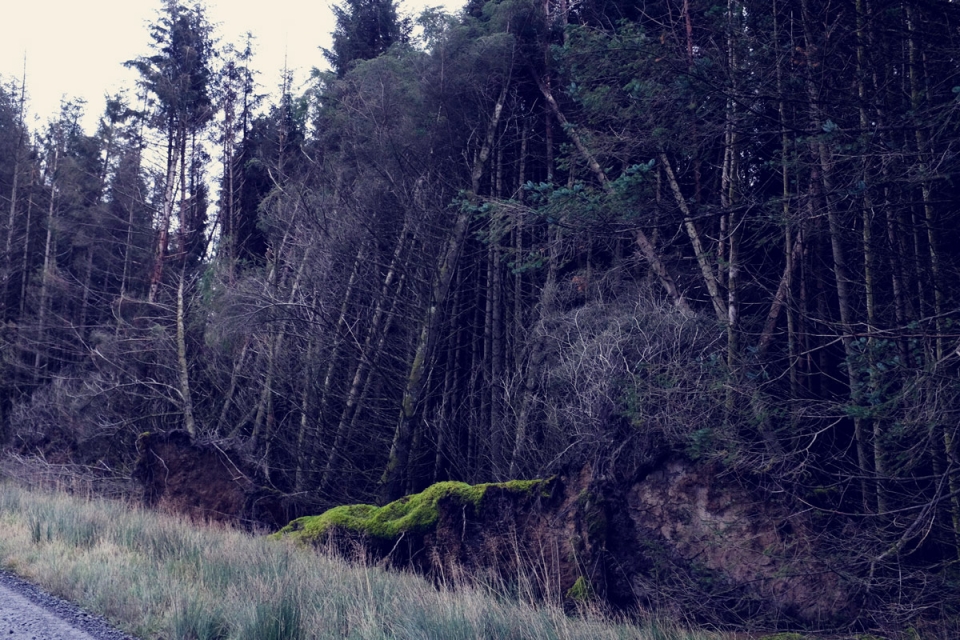
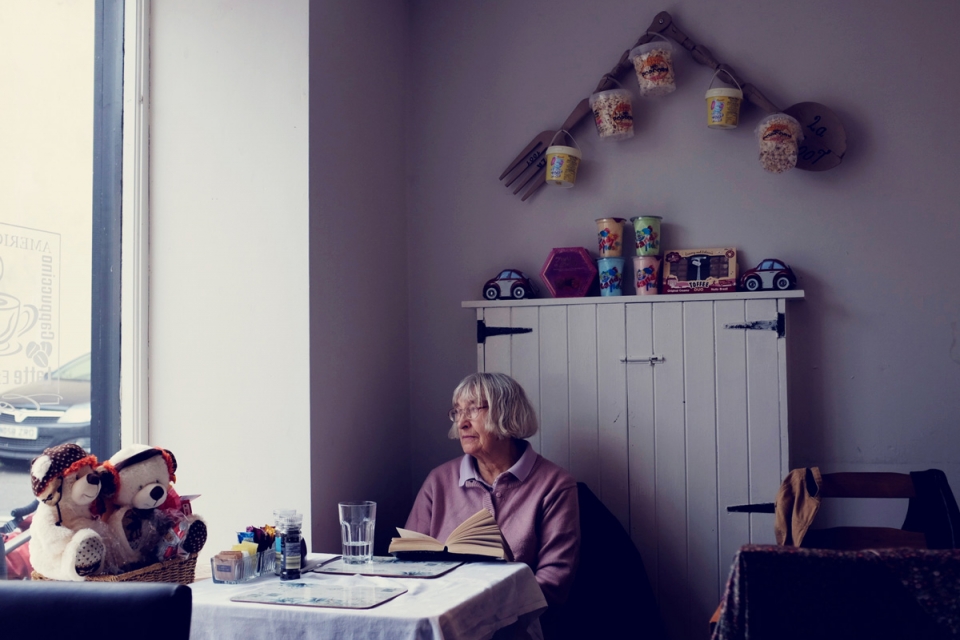
However, battling the winds and riding the off-road tracks meant slow progress. And, to make things worse, after a quick food stop at a café on the main square in Haltwhistle, the weather turned again with 35 miles left to ride – including Hartside Pass. It wasn’t going to happen…
In the end, we cut our losses in Alston, and had to ask around for a lift the last 20 miles in order to make our train back. Given the weather, the town was scarce of anyone, so we ended up asking in the reception of a mechanic’s forecourt. Five minutes later, and a guy in a converted school minibus arrived who was happy to take us all to Penrith – “I haven’t seen weather like this for years” he shouted loudly after turning the fan up to max to clear the windscreen. The rain and wind was relentless. Having only managed 37 miles in 6 hours, we were relieved to be on the final straight.
What a weekend…
Road Testing the Ortlieb Back-Roller Pro 'Plus' Panniers
The prospect of a short tour in adverse weather conditions presented the perfect opportunity to road test Ortlieb’s newly released XL panniers – the Back-Roller Pros. At first, we were sceptical of their size – they are the largest panniers on the market (Jan 2016) – so we got hold of a sample pair and loaded up the rear of the Tout Terrain bike for the long weekend. For this trip in particular, their 70L capacity (+8L with the outer pockets) proved ideal for stowing all the extra clothing we needed to take to photograph.
This was us crossing the dam which maintains Kielder Water – the UK’s largest reservoir by capacity – before heading back to the Bothy:
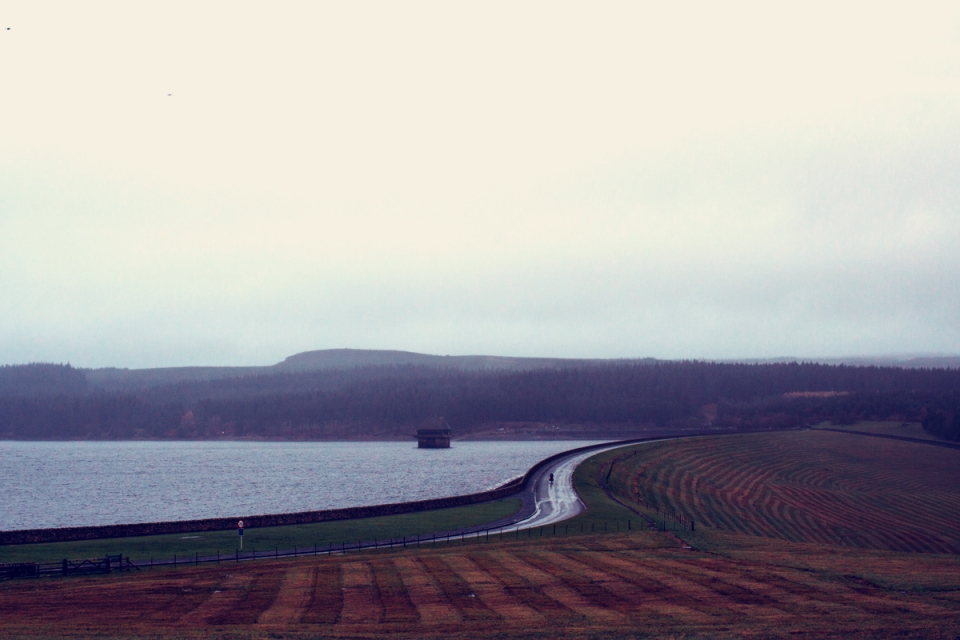
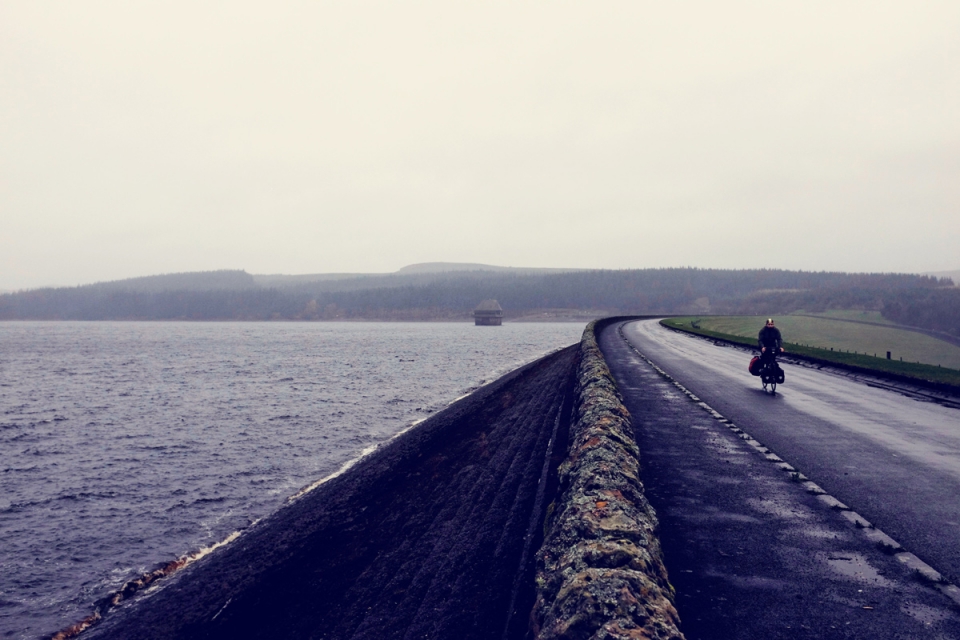
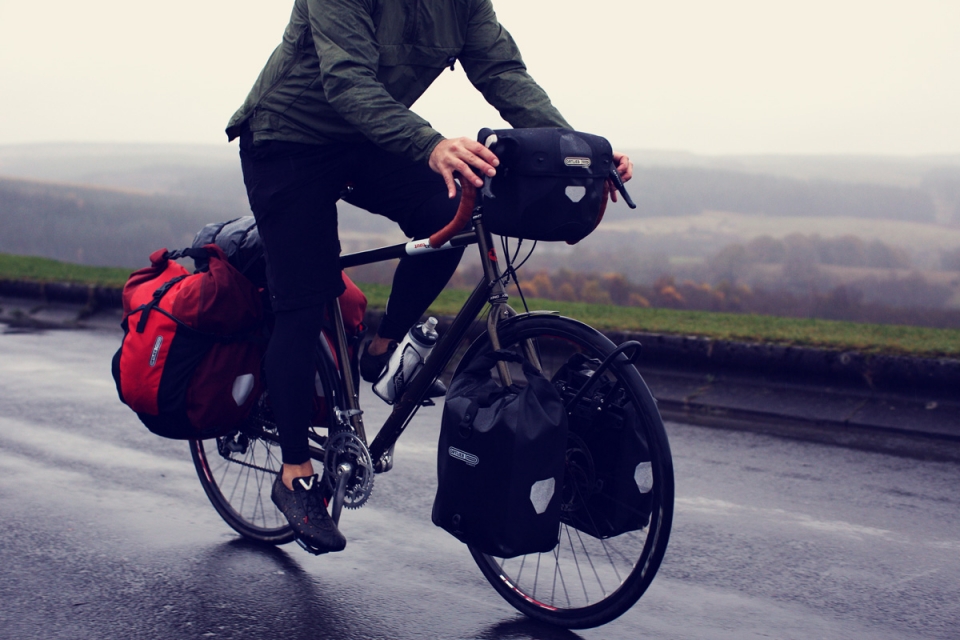
First off, it has to be said that the Pros are big ol’ panniers – providing an additional 30L on top of the 40L-ish we are used to. Ortlieb’s thinking is that by offering more capacity in panniers, not only can you reduce the number of bags to haul around when off the bike, but you reduce the reliance on a big top (rack) bag which, in turn, lowers the weight and bulk of your luggage and improves stability/comfort on the road when fully loaded. Riding on various surfaces (even on the gravel and forest tracks) and inclines over the weekend with just the 10L dry bag (tent) strapped to the rack proved this to be a fair point. When the panniers are full, it does means that you and your bike become a slightly wider load, so just be aware when squeezing through small gaps, and traffic.
Over the course of this trip, it was also important to test whether the panniers functioned well with less kit in, to see if the Pros can be owned as everyday panniers, or used on cycle tours when you wouldn’t typically need the full 70L . As you can see in these photos, going out on this ride we didn’t have the Pro panniers full to the brim, and the roll closure w/ adjustable straps works fine – a great deal of the extra capacity is in the width – and the panniers were secure on the bike.
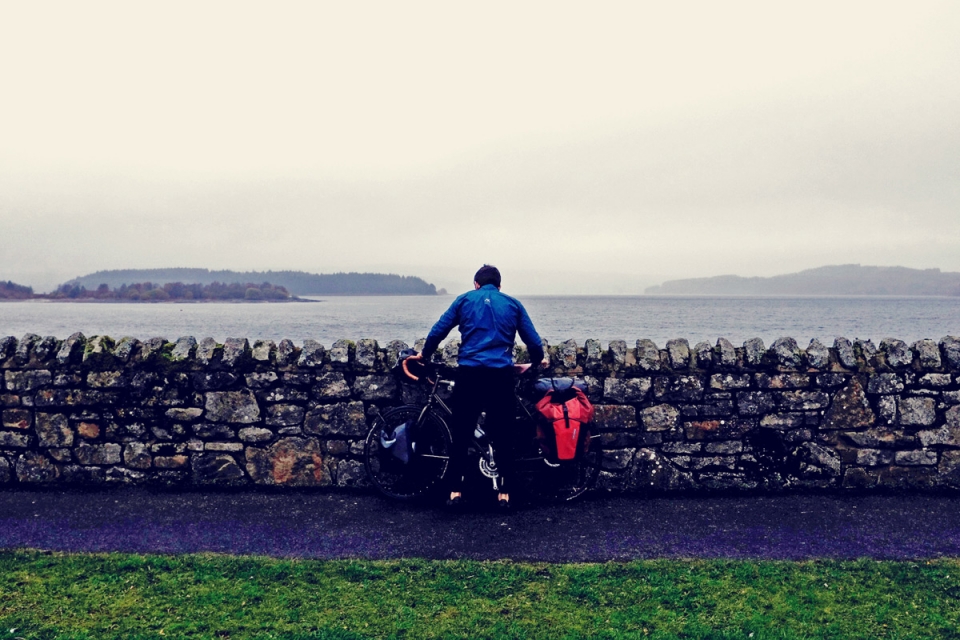
For us, the outer pocket is a basic, but great selling point – super practical for stowing accessible layers of clothing, wet touring gear, an out-of-reach hip flask, and things you need access to on the road that you might not want in a handlebar bag. They are spacious too (4L / pannier) and over the course of the weekend, we had everything in them from wind jackets, to the OS maps we weren’t using, to bananas. Internally, the only issue is organising luggage within the single larger space. Yes, the outer pocket is a fantastic addition, and there is an inner pocket, but to save time trawling through panniers at the roadside, it is worth investing time before you pedal off…
As with every Ortlieb product, you can rest assured that pedalling off into the unknown with the Pros, the luggage is 100% waterproof – the laminated Cordura fabric used on the “Plus” range can look like the panniers aren’t as bombproof as the “Classic” range made with the PVC, but that isn’t the case at all; the Plus material is more lightweight as well as being a touch friendlier to the environment. Believe us, these got soaked regularly over the weekend as we rode through horizontal rain, and everything stayed dry.
With the Pro panniers, you also get Ortlieb’s tried and tested QL 2.1 adjustable mounting system which fixes securely to virtually all racks (up to 16mm), internal pocket organisation (with zipped section for smaller/valuable items), removable carry strap, large reflective panels front and back, and an easy roll-closure system. We didn’t always close the bags using the recommended method – clipping up top, rather than to the side, but providing you get 3-5 full rolls in, the water stays out fine…
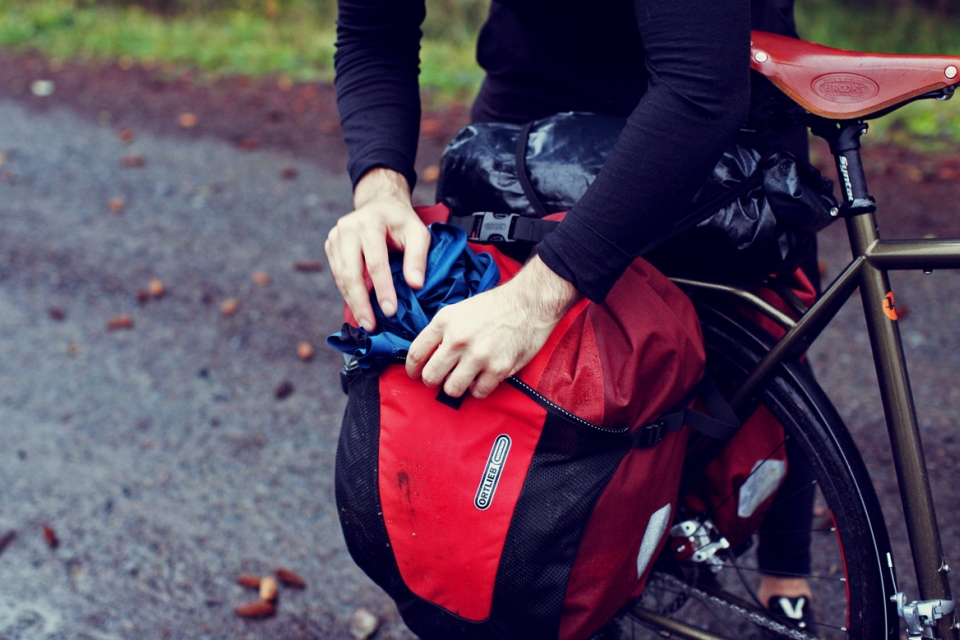
The new Ortlieb Back-Roller Pros are BIG panniers that afford you a lot more space in less luggage. If you are a cyclist who likes to travel as lightweight and efficiently as possible, these are not for you; you have probably switched off already. However, given their flexible carrying capacity, the Back-Roller Pro Plus’ are a no-brainer for any travelling cyclist wanting to carry a good amount of kit, on varying tours – equally perfect for heading off on bigger expedition tours, as pedalling off on a shorter tour with the kitchen sink…